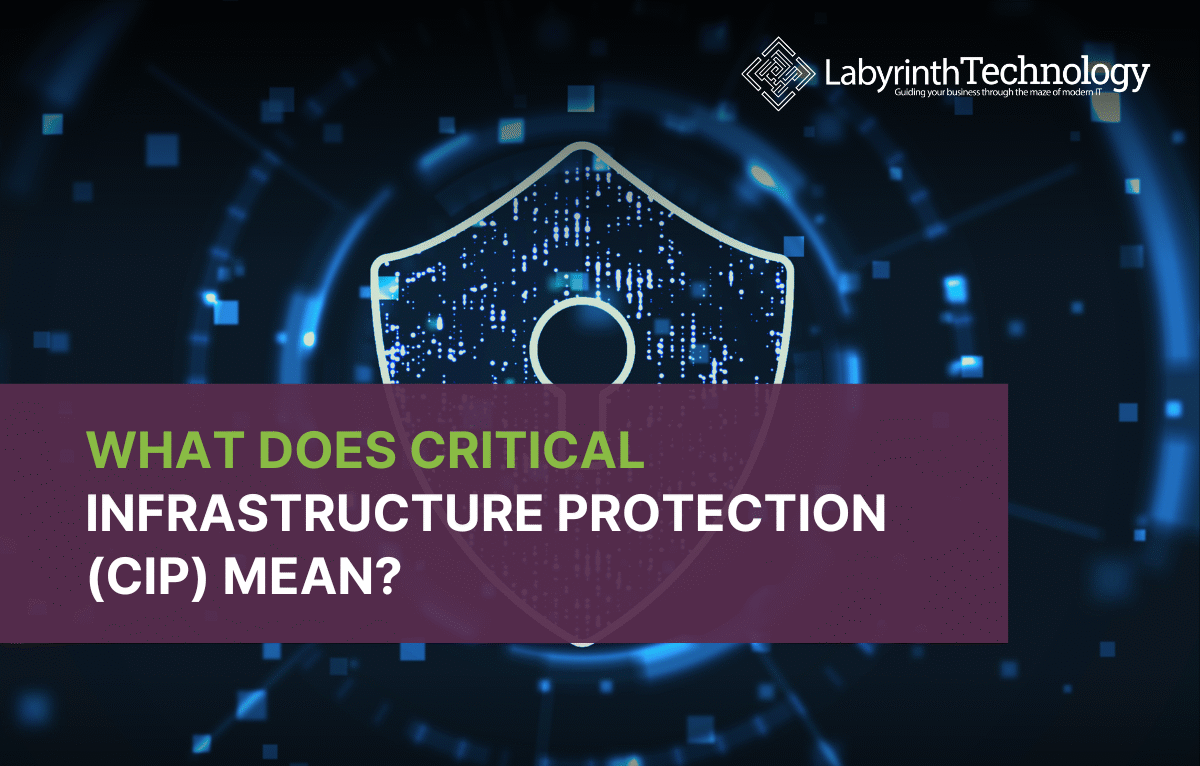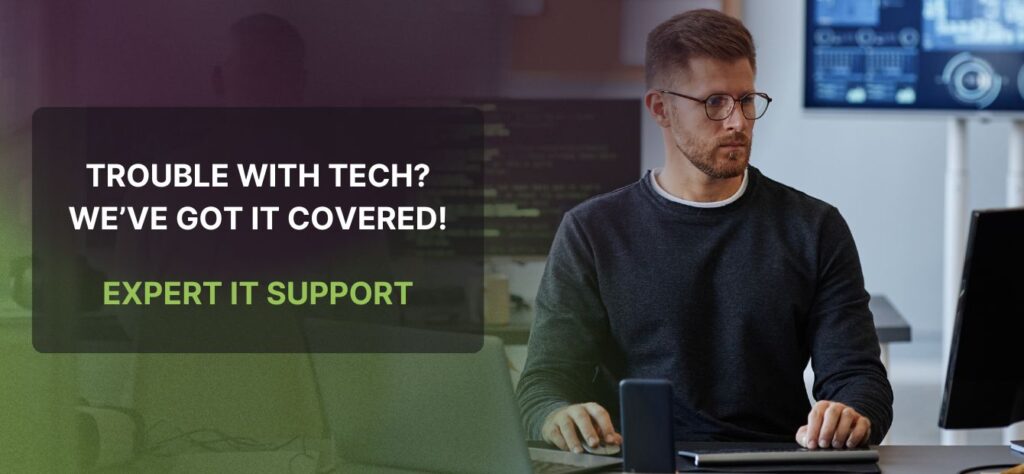
Critical infrastructure protection (CIP) is about securing the digital and physical systems that deliver essential services. These systems include power, water, healthcare, financial services, emergency response, and digital infrastructure. They’re vital to national and economic security, but increasingly exposed to cyber threats, physical attacks, equipment failures, and supply chain weaknesses. From network security to resilience testing, businesses need to strengthen their defences, improve their visibility, and plan for disruption. If your organisation supports or operates within critical sectors, now’s the time to act. Labyrinth Technology helps companies identify risk, secure infrastructure, and respond to emerging threats.
Critical infrastructure protection (CIP) is the practice of defending the systems that keep a country running. These include critical infrastructure assets in the energy sector, water and wastewater systems, public health, agriculture, financial services, transport, and emergency services.
In a cyber context, critical infrastructure protection means making sure these systems are safe from cyber attacks, operational disruptions, and physical and cyber threats. It’s about prevention, but also recovery. It’s about visibility and control. And it’s about resilience, because when infrastructure goes down, lives and livelihoods are at risk.
Today, these systems rely heavily on operational technology, digital infrastructure, and complex data environments. And because they often run 24/7, with limited maintenance windows and legacy hardware, they’re especially vulnerable to system failures and data acquisition attacks.
Add in third-party risk, remote access, and geopolitical tensions, and you’re looking at a sector under constant pressure.

There’s no sugar-coating it: critical infrastructure faces significant risks. And these aren’t future problems, they’re current ones.
The shift to remote management, automation, and digitisation has introduced a wide attack surface. Once-isolated systems like SCADA networks and supervisory control systems are now connected to the cloud, often managed via third-party vendors, and sometimes accessible over the internet.
These platforms are responsible for running essential systems, such as power generation, drinking water, traffic control, and public safety communications. They are also prime targets for hackers, criminals, and state-backed groups. Why? Because such attacks cause chaos. Disrupting power, blocking ambulances, or freezing digital payments grabs attention, fast.
And attackers don’t need to hit the core. They often go through a partner or supplier, exploiting infrastructure protection gaps in the supply chain. This is especially dangerous when dealing with high value industries or companies who lack visibility over their network security and third-party risk exposure.
There’s a long-standing misconception that critical infrastructure protection is the government’s responsibility. That’s no longer true.
The reality is that large parts of the UK’s national infrastructure are operated or supported by the private sector. From cloud providers managing public health data to engineering firms supplying software to the energy sector, many companies are directly connected to systems that impact national defence, public safety, and economic security.
If your business delivers services to a hospital, a water utility, a local authority, or a transport network, you are a part of this infrastructure.
This also applies if you handle data for regulated sectors, provide APIs or platforms for emergency services, or support digital infrastructure used in critical services. In each of these cases, you become an entry point. A weak link. A potential vulnerability.
So even if your organisation doesn’t own or operate core infrastructure, you could still play a key role in securing critical infrastructure, or in accidentally exposing it.

Emerging threats are not hypothetical.
We’ve seen real-world attacks on power plants, transport systems, public health records, and financial networks. Some incidents have been caused by physical security breaches. Others by phishing emails, outdated firmware, or poorly configured admin access.
And it’s not always sophisticated. Sometimes the biggest gaps are simple: shared passwords between systems, unmonitored vendor access, lack of network segmentation, flat networks with no logging and even third-party services with weak controls.
The result? Infrastructure failures, unplanned downtime, regulatory scrutiny, and in some cases, national headlines. These are not just technical problems, they’re business continuity problems, reputation problems, and compliance risks.
You won’t stop every threat. No one will.
That’s why true critical infrastructure protection focuses on resilience of critical systems, not just their defences.
Yes, you need to harden your security posture. But you also need to be able to detect attacks in real-time, isolate affected systems, restore services quickly and continue to operate during a crisis.
It’s not about perfection. It’s about planning, testing, and knowing what to do when systems break. Because they will.
This is what separates strong infrastructure from weak infrastructure. It’s also what regulators are now asking for. From the National Infrastructure Protection Plan to sector-specific requirements under the NIS Regulations, you’re expected to have a plan. Not just a firewall.
If your business touches any part of critical infrastructure, here’s what to do:
What critical infrastructure assets do you support or rely on? What systems are essential for your operations?
Evaluate network security, access control, third-party risk, and system dependencies. Include both internal and external threats.
Don’t let one breach compromise your entire estate. Isolate essential systems from non-critical ones.
Remove unnecessary admin rights. Enforce MFA. Monitor privileged access. These are basic but vital steps.
Use tools that allow continuous monitoring of your systems and logs. Visibility is your first line of defence.
Can you recover in hours? Minutes? What’s your actual recovery time from a simulated attack?
Ask your providers the hard questions. Who has access to your data? What’s their recovery plan? Are they prepared?

At Labyrinth Technology, we help businesses build cyber resilience into everything they do. Our role is to make security practical and effective without adding unnecessary complexity or slowing you down.
We work closely with you to uncover potential threats and system weaknesses, whether that’s through vulnerability scanning, security audits, or reviewing your current IT setup. We also help you strengthen your network security and remote access, ensuring your systems are protected against both common and advanced cyber threats.
Through our proactive support, we implement continuous monitoring and real-time alerting, giving you the visibility needed to react quickly to unusual activity. Our consultants help you build and regularly test your disaster recovery and business continuity plans, so you’re prepared for unexpected system failures or emerging threats.
We focus on delivering comprehensive protection that aligns with your goals and industry requirements, combining layered defences across your infrastructure while keeping everything efficient and easy to manage. We offer clarity, show you what’s working, what isn’t, and how to create a smarter, more resilient setup that can withstand attacks, meet compliance standards, and support your growth.
Critical infrastructure protection isn’t just about power grids and air traffic control. It’s about digital infrastructure too, the networks, platforms, and systems run by businesses like yours.
If your company supports vital services, handles sensitive data, or provides infrastructure for regulated sectors, you’re already part of the national infrastructure. That means you share the responsibility for keeping it safe.
This isn’t just an IT concern. It’s an operational one. A board-level one. One that affects your clients, your reputation, and your ability to keep delivering.
The sooner you understand your role, the sooner you can take control of your risks.
Labyrinth Technology is here to help. Let’s make your business stronger, before someone else tests your resilience for you.
Empowering London Businesses with Efficient IT Solutions to Save Time and Stay Ahead of the Competition.